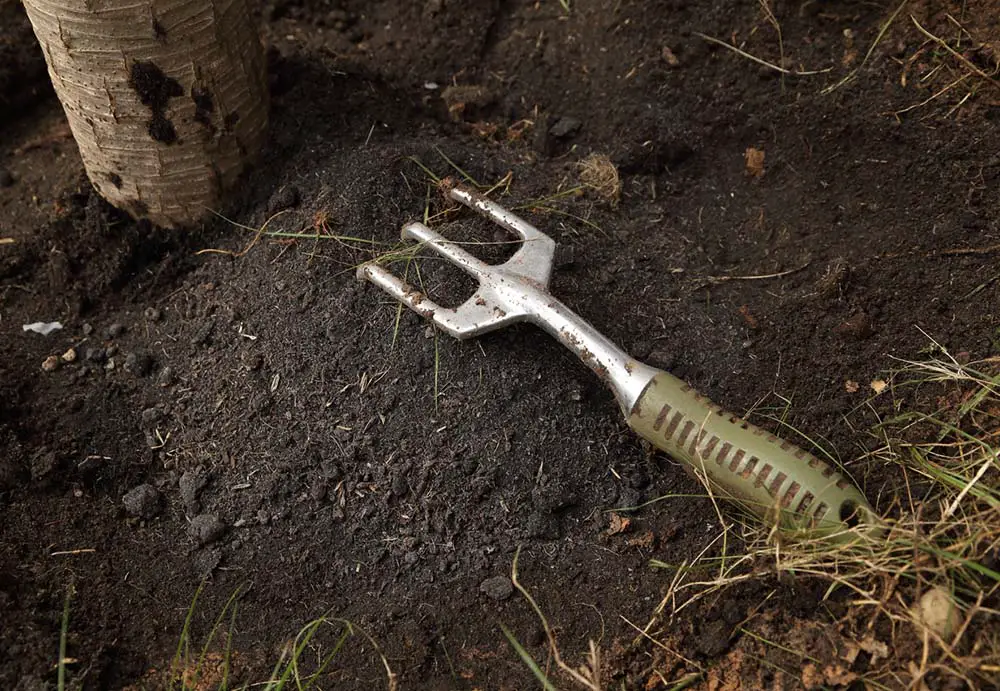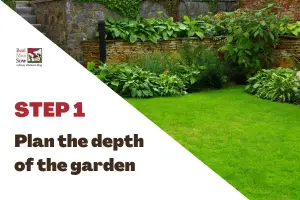Last Updated on April 9, 2024 by Real Men Sow
Anything is possible if you are willing to put your mind to it. You can level your garden with the tools you already have and some hard work even if you don’t have a digger. There is a process to get the best results from anything. We have it covered. This guide will teach you how to level a garden without a digger.
So, let’s get started!
Special Tools To Level Garden Without A Digger?
Many homeowners are put off by the idea that they need various tools to level their gardens. The goal is to create a flat garden without needing a digger. This takes out one of the most costly and cumbersome pieces in the equipment set.
Most likely, everything you need for flattening your lawn is already in your possession. You may need to rent a compactor depending on how big your garden is.
Here is a list of all the things you will need.
- String and stakes, or a piece 2×4 lumber
- Spirit level
- A shovel
- Water
- A rake
- You will need a soil compactor if your garden is larger.
- A wheelbarrow
- Protective gardening attire, such as gloves or gardening shoes
- Optional: Grass seed (or turf)
What is the standard size and depth of a garden?
The average depth of a garden is 6 inches, and the width of a garden is 10 feet. You can start with this to start leveling your spots with topsoil. For best results, make sure you take an accurate measurement of the area of your garden, so you can purchase enough soil to fill up the gaps and level your garden. The simple way you calculate the size of your garden is by multiplying its length and width. For example, a rectangular garden that measures 4 feet by 8 feet will have an area of 32 square feet.
Steps For Levelling Your Garden Without A Digger
You must be willing to work hard to level your garden. But, your efforts will pay off, and you’ll be proud to own a beautiful, level garden.
1. Plan the depth of the garden
You will need to mark the location of work depending on the purpose. Determine whether the lawn needs to be raised or lowered before leveling it. Usually, both are needed.
You have two options for measuring: the carpenter method or the string method. Both methods will produce the same results, so it comes down to personal preference.
String Method
If you prefer the string method, take four stakes and place them in the ground in a square. This will mark the area that you want to level. Connect these stakes to a string line and pull it tight. To determine how much work is required, measure the areas you need to level. To ensure accuracy, you should measure each side of the square. You should also make notes to ensure consistency throughout the project.
Alternately, if using the carpenters’ method, you will lay a piece of lumber along the area you wish to work on. Use a spirit level or a ruler to measure how uneven the ground is. Many people prefer this method, but it is up to you.
2. Soften the Ground
You may have to cut the grass depending on how thick it is. If you’re going to do this, it is important that you water the entire area. This will make digging easier.
It is possible to water the area for a few days if you have the time. This will ensure that it is saturated. To avoid a muddy mess that makes it almost impossible to dig, don’t use too much water.
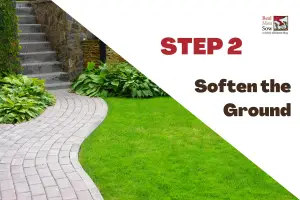 3. Remove the Grass
3. Remove the Grass
Anyone who will be removing grass from an area is required to complete this step. This step is not necessary if you’re starting a new garden.
A flat shovel is necessary to remove the grass. You should not dig too deeply, but enough to remove the roots and grass. The shovel should be inserted into the soil between three to six centimeters. The shovel should be able to slide under the grass and lift the soil underneath.
This is a great time to start the leveling process. However, you should try to keep the ground level as much as possible while you are removing soil and grass. This part of the job takes time depending on how large your garden is so make sure you have enough time.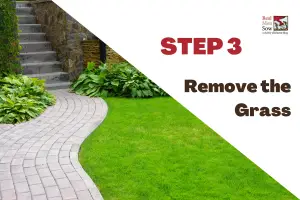
4. Level the Ground
After removing all the grass and weeds, you can start leveling the garden without a digger. Filling in lower areas is better than bringing down higher hills. This method might not work if there are significant differences in their height.
You will need nutrient-rich soil to fill these areas. Although you can add any soil to your garden, it will not be beneficial. This is the best time to get things done right in order not to have problems later. After the soil is applied, use a rake or a trowel to level it all.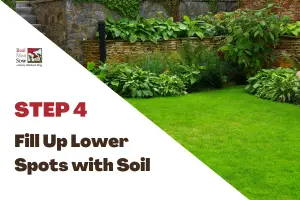
Compact Soil
After leveling the soil, compact it. This is an important step because it protects the soil from natural erosion. A soil compactor may be required depending on the size and layout of your garden. You can hire one if you don’t own one. Do not worry as it is very affordable. If you are working in a small area, you should wear heavy boots and stamp on the soil until it is compacted.
For a few weeks, you will be unable to plant anything in the soil. This will allow the soil to settle. You should water the soil regularly during this period, especially if it is not getting much rain.
What If I Have Very High Spots in the garden?
We mentioned earlier that specific gardens might have significant height differences and high spots. Although the above-mentioned method may not work, it is possible to repair these areas without hiring any diggers.
You will need to remove all soil and other materials until the ground is within a few centimeters from the surrounding areas. You can then use the previous method to make the ground flat. This may require more effort, but it is effective while being cost-friendly.
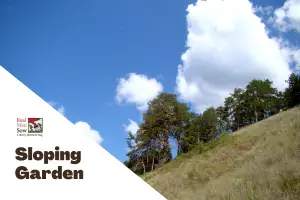
Why Should You Level Your Garden?
Obviously, one of the reasons to level your garden is for its aesthetic but also practical gardening. While an uneven garden may not look very pleasing to the eye, there are many other benefits to leveling your yard.
- It is much easier to maintain your garden without having to climb hills or go down slopes. Even if self-propelled, many lawnmowers have difficulty scaling steep hills. Many people prefer to level the ground in order to make mowing easier.
- It is easier for the plants to absorb moisture and other nutrients when the lawn is flat.
- You may feel that your space is limited if you have a sloped lawn. A flat garden is better for children. They can play safely and there will be more places to sit and relax.
The personal benefit of leveling your garden without a digger is that you get to workout and spend more time outdoors. What an opportunity to dig into some garden design and care for your health simultaneously!
Tips to level a sloping garden
The first thing you need to do is ask yourself when you start leveling a sloping garden without a digger, what your goal is. Do you want to plant flowers or vegetables? Do you want a garden that’s easy for the kids to play in? Are you looking for a way to create an outdoor living space?
The key steps to level a sloping garden are:
- Make sure there’s enough room for trees and plants.
- Creating terraces on sloping ground with retaining walls or steps.
- Add soil and compost as needed.
Final Thoughts On Leveling Your Garden Without A Digger
If you want to level your garden without a digger, there are some things you need to know before starting. First, make sure that the ground is dry enough for digging. If it’s too wet, wait for it to dry out first. Second, consider what you’ll need – like trowels and spades – before starting the project. Third, have patience! It might take some time before your garden again looks like a patio or lawn.
A digger is a great way to level your garden. However, it’s not the best option if you want to lower the price of your gardening experience… It is much easier to get a fun DIY job, and it will save you money if you’re willing to work hard. Will you level your garden without a digger now? Let us know in the comments!

